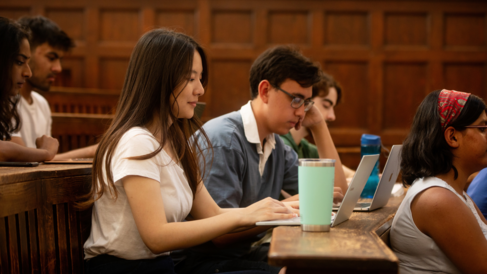Course structure

A flexible 3-year degree – or 'tripos' as it’s known at Cambridge – that can be customised according to your interests and strengths.
Specialise in one core subject, such as Politics, Social Anthropology, or Sociology, or keep your options open with a two-subject track.
You don't have to decide which subjects you're most interested in before applying.
Teaching
Teaching is provided through lectures and seminars. You also have weekly supervisions – small group teaching sessions to provide personalised feedback on your work.
You will usually have 8 hours of lectures, and one or two supervisions each week during your first year.
Assessment
Assessment is mostly through examinations. Some papers are assessed by coursework.
In the third year you can replace one paper with a 10,000 word dissertation.
You won't usually be able to resit any of your exams.
Year 1 (Part I)
In Part I, students take four introductory papers, students should select three papers from:
- One from: The Modern State and its Alternatives (POL1) or International Conflict, Order, and Justice (POL2)
- Social Anthropology: The Comparative Perspective (SAN1)
- Introduction to Sociology: Modern Societies I (SOC1)
Students should select one further paper from the list below:
- Social Anthropology: Ethnographic Methods and Writing (SAN2)
- The Modern State and its Alternatives (POL1)
- International Conflict, Order, and Justice (POL2)
- World Archaeology (A1)
- Introduction to the Cultures of Egypt and Mesopotamia (A3)
- Humans in Biological Perspective (B1)
- Social, Applied and Individual Differences (PBS02)
If you already know what you want to specialise in from your second year, choose compatible papers to help you prepare.
To find out more about the content of each paper, read our Part I Paper Guides.
Years 2 and 3 (Part II)
In your second and third years, you can design your course further to suit your interests and strengths.
Choose to specialise in a single or joint subject track. This is the main way you can tailor your degree. Each track determines which papers are available to take from different departments.
This decision is made towards the end of your first year (Part I). You can discuss your options with academic staff including your supervisor, personal tutor, and Director of Studies.
Single tracks allow you to dig into one core subject and choose from a wide range of papers in that discipline. Joint tracks allow you to pursue multiple interests, studying in more than one department.
It’s not possible to change tracks unless you switch from a joint-subject track to one of the subjects within it.
| The 3 single-track options are: | The 5 joint-track options are: |
|
|
